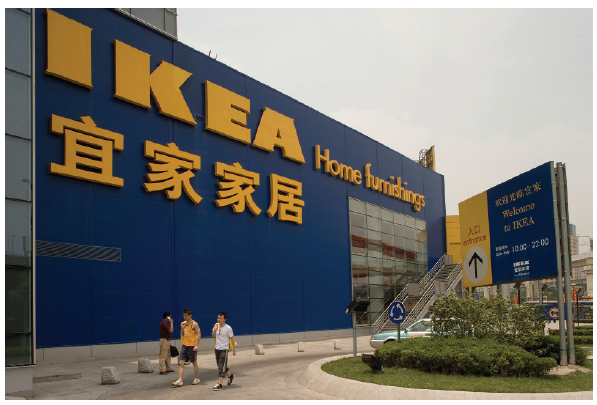1. Review the characteristics of global and transnational companies in Chapter 1. Based on your reading of...
Question:
2. At the end of Chapter 11, it was noted that managers of IKEA stores have a great deal of discretion when it comes to setting prices. In terms of the ethnocentric/polycentric/regiocentric/ geocentric (EPRG) framework, which management orientation is in evidence at IKEA?
3. What does it mean to say that, in terms of Porter€™s generic strategies, IKEA pursues a strategy of €œcost focus€?
IKEA has been called €œone of the most extraordinary success stories in the history of postwar European business.€ However, the first few years of the twenty-first century were difficult for IKEA, the $31 billion global furniture powerhouse based in Sweden. The euro€™s strength dampened financial results, as did an economic downturn in Central Europe. The company faces increasing competition from hypermarkets, €œdo-it-yourself€ retailers such as Walmart, and supermarkets that are expanding into home furnishings. During his tenure as CEO from 1999 to 2009, Anders Dahlvig stressed three areas for improvement: product assortment, customer service, and product availability.
With stores in 40 countries, the company€™s success reflects founder Ingvar Kamprad€™s €œsocial ambition€ of selling a wide range of stylish, functional home furnishings at prices so low that the majority of people could afford to buy them (see Exhibit 16-11). The store exteriors are painted bright blue and yellow, Sweden€™s national colors. Shoppers view furniture on the main floor in scores of realistic-looking settings arranged throughout the cavernous showrooms.
At IKEA, shopping is a self-service activity; after browsing and writing down the names of desired items, shoppers can pick up their furniture on the lower level. There, they find €œflat packs€ containing the furniture in kit form; one of the cornerstones of IKEA€™s low-cost strategy is having customers take their purchases home in their own vehicles and assemble the furniture themselves. The lower level of a typical IKEA store also contains a restaurant, a grocery store called the Swede Shop, a supervised play area for children, and a baby care room.
IKEA€™s unconventional approach to the furniture business has enabled it to rack up impressive growth in an industry in which overall sales have been flat. Sourcing furniture from a network of more than 1,600 suppliers in 55 countries helps the company maintain its lowcost, high-quality position. During the 1990s, IKEA expanded into Central and Eastern Europe. Because consumers in those regions have relatively little purchasing power, the stores offer a smaller selection of goods; some furniture is designed specifically for the cramped living styles typical in former Soviet bloc countries.
Throughout Europe, IKEA benefits from the perception that Sweden is a source of high-quality products and efficient service. Currently, Germany and the United Kingdom (UK) are IKEA€™s top two markets. The UK represents IKEA€™s fastest-growing market in Europe. Although Brits initially viewed the company€™s less-is-more approach as cold and €œtoo Scandinavian,€ they were eventually won over. IKEA currently has 18 stores in the UK, and plans call for opening more in this decade. As Allan Young, creative director of London€™s St. Luke€™s advertising agency, noted, €œIKEA is anticonventional. It does what it shouldn€™t do. That€™s the overall theme for all IKEA ads: liberation from tradition.€
Exhibit 16-11

Step by Step Answer:






